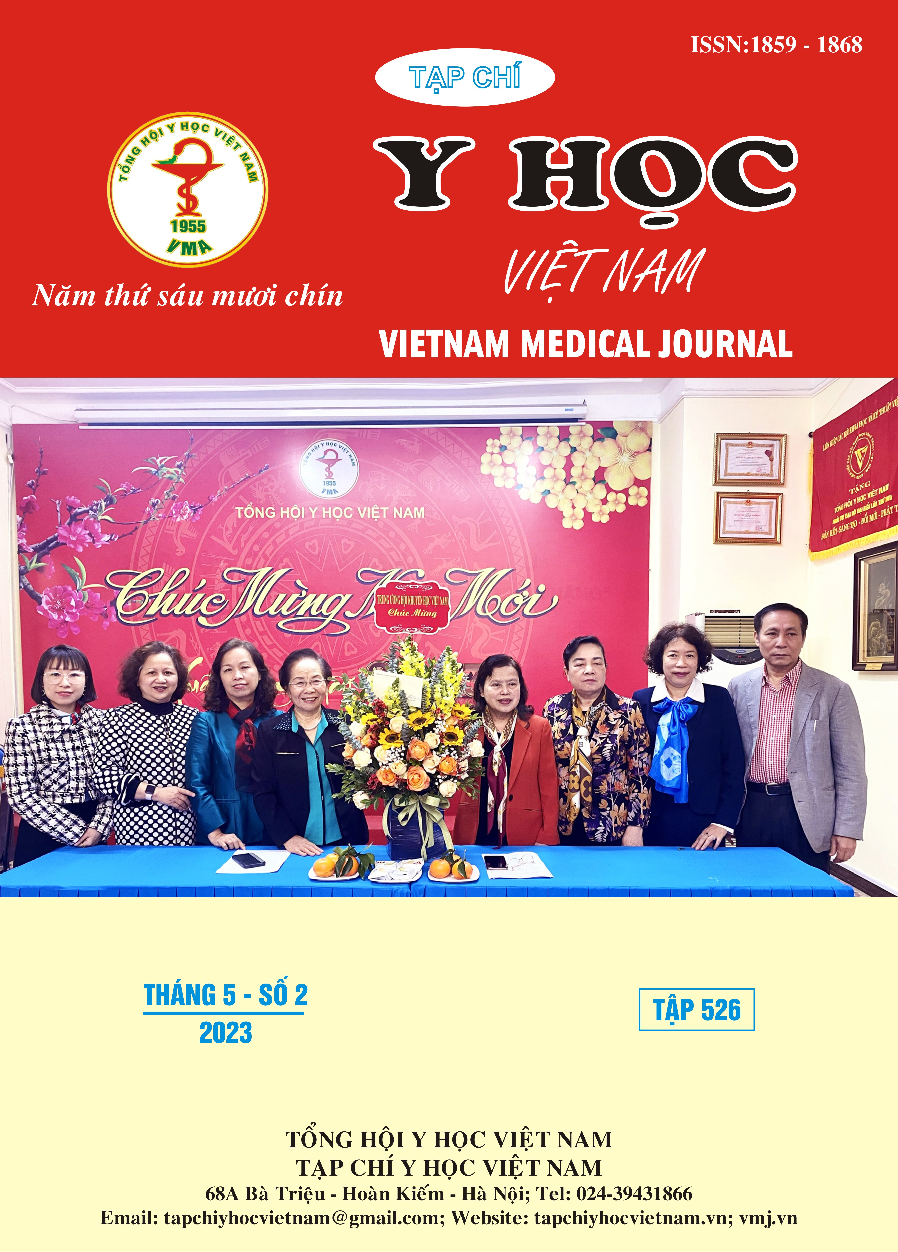BIVENTRICULAR REPAIR FOR INTERRUPTED AORTIC ARCH ASSOCIATED WITH LEFT VENTRICULAR OUTFLOW TRACT OBSTRUCTION AT VIETNAM NATIONAL CHILDREN’S HOSPITAL
Main Article Content
Abstract
Objective: Interrupted aortic arch-ventricular septal defect associated with left ventricular outflow tract obstruction is a severe congenital heart disease with worse outcomes. This study focused on primary outcomes of single stage biventricular repair including aortic arch reconstruction, release of left ventricular outflow tract obstruction and ventricular septal defect closure at our institution. Methods: From February 2015 to October 2020, all patients diagnosed with interrupted aortic arch-ventricular septal defect associated with left ventricular outflow tract obstruction and who underwent single-stage repair were reviewed retrospectively. Results: Thirty-five patients were retrospectively collected, including 24 males and 11 females. The median age and median weight of patients in this study were 29 days (IQR, 15-54 days), and 3.4 kg (IQR, 2.2-4.5 kg), respectively. The median diameter of the left ventricular outflow tract and Z-score of the aortic valve were 4.3 mm (IQR, 3-8 mm), and -3 (IQR, -5.3 - -1.2), respectively. Fourteen patients (40%) had cardiogenic shock when admitted to the hospital. The mean aortic cross-clamp time, bypass time, and regional cerebral perfusion time were 88.6 ± 16.3 minutes, 119.5 ± 21.6 minutes, and 32.2 ± 10.5 minutes, respectively. Twelve patients (34.3%) underwent conal septum resection, and 23 (65.7%) had placement of the superior border of the ventricular septal defect patch to the left side of conal septum. Aortic arch reconstruction was performed with extended end-to-end anastomosis in 31 patients (88.6%) and 4 patients (11.4%) had an additional patch to increase the diameter of the anastomosis of the aortic arch. There were 4 early deaths (11.4%) and no late death. Seven patients required reoperation due to recurrent left ventricular outflow tract obstruction. The overall survival and freedom for left ventricular outflow tract obstruction at 5 years were 88.2% and 20.7%, respectively. Conclusions: Primary outcomes of single stage surgical repair for interrupted aortic arch-ventricular septal defect-left ventricular outflow tract obstruction were good and effectiveness. Recurrent left ventricular outflow tract obstruction was the main cause of indication for reoperation, and these patients definitely needed closely follow-up after operation.
Article Details
Keywords
interrupted aortic arch, ventricular septal defect, left ventricular outflow tract obstruction, single stage biventricular repair
References
2. McCrindle BW, Tchervenkov CI, Konstantinov IE, William G. Williams, Neirotti RA, Jacobs ML, et al. Risk factors associated with mortality and interventions in 472 neonates with interrupted aortic arch: A Congenital Heart Surgeons Society study. J Thorac Cardiovasc Surg. 2005 Feb;129(2):343–50.
3. Jegatheeswaran A, McCrindle BW, Blackstone EH, Jacobs ML, Lofland GK, Austin EH, et al. Persistent risk of subsequent procedures and mortality in patients after interrupted aortic arch repair: A Congenital Heart Surgeons’ Society study. J Thorac Cardiovasc Surg. 2010 Nov;140(5):1059-1075.e2.
4. Luciani GB, Ackerman RJ, Chang AC, Wells WJ, Starnes VA. One-stage repair of interrupted aortic arch, ventricular septal defect, and subaortic obstruction in the neonate: A novel approach. J Thorac Cardiovasc Surg. 1996 Feb;111(2):348–58.
5. Bove EL. The management of severe subaortic stenosis, ventricular septal defect, and aortic arch obstruction in the neonate. J Thorac Cardiovasc Surg. 1993 Feb;105(2):289-95; discussion 295-6. PMID: 8429657.
6. Geva T, Hornberger LK, Sanders SP, Jonas RA, Ott DA, Colan SD. Echocardiographic predictors of left ventricular outflow tract obstruction after repair of interrupted aortic arch. J Am Coll Cardiol. 1993 Dec;22(7):1953–60.


